/people
AT HOME IN MORE THAN ONE DISCIPLINE
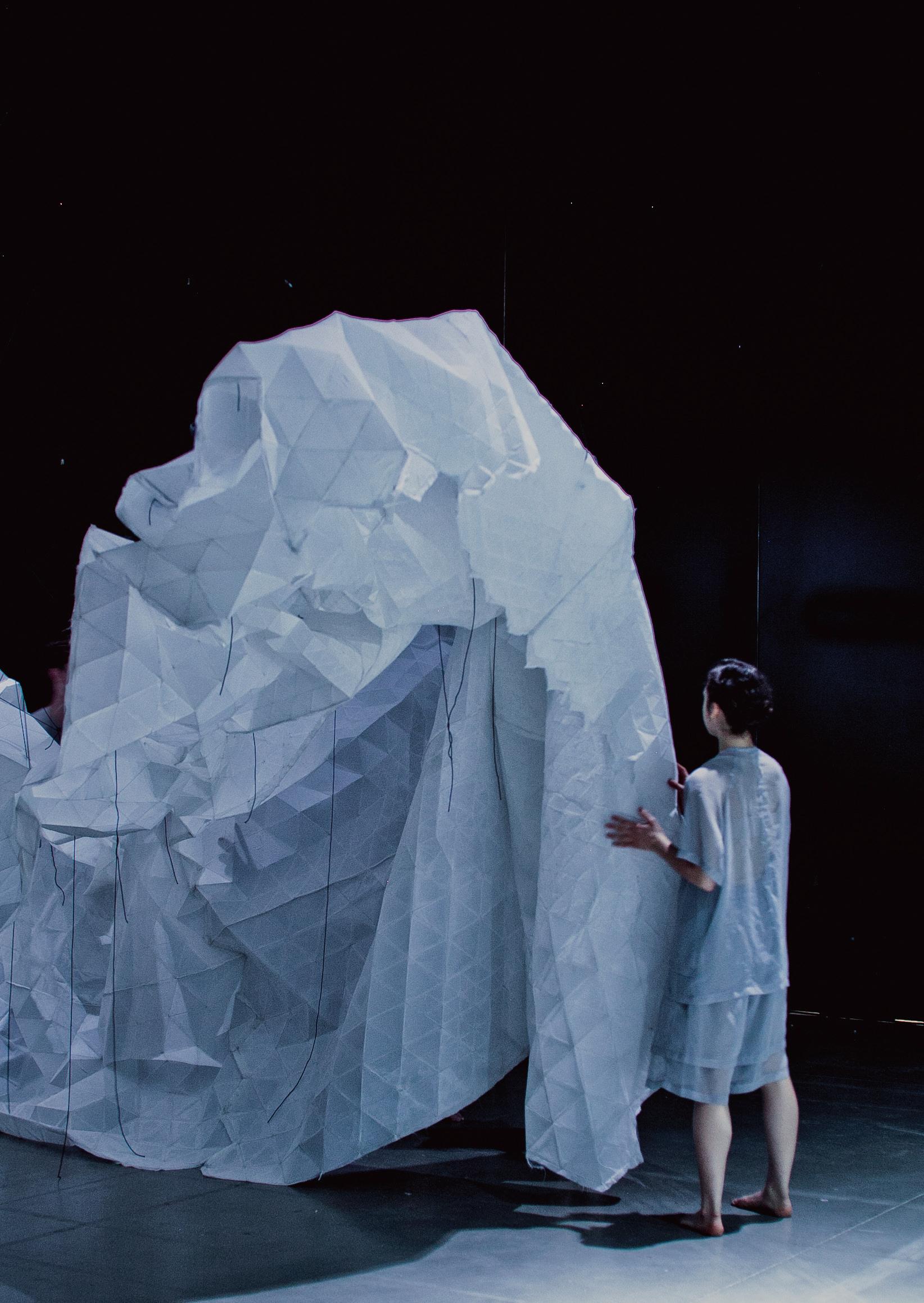
THEO LORENZ TANJA SIEMS
MIRAJ AHMED
AMR ASSAAD
DAVID GREENE
GRAHAM HARMAN
ROBIN HUNT
PORTIA KAMONS
ALBENA YANEVA
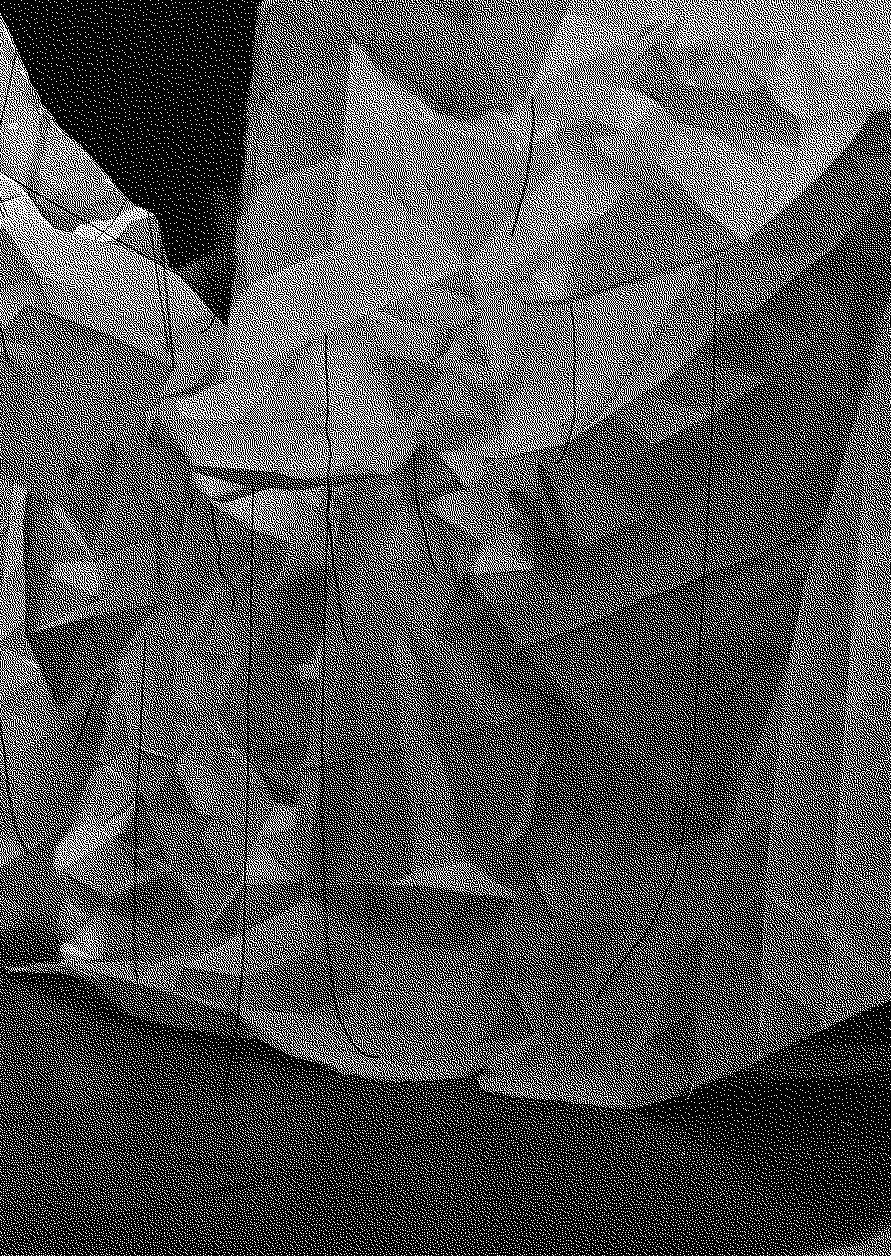


THEO LORENZ TANJA SIEMS
MIRAJ AHMED
AMR ASSAAD
DAVID GREENE
GRAHAM HARMAN
ROBIN HUNT
PORTIA KAMONS
ALBENA YANEVA

AMR
ALBENA
Miraj Ahmed, Theo Lorenz and Tanja Siems
On the question of the definition of Architecture
On the question of the ‘Art World’
On the question of Enabler and Creator
On the question of Education
On the question of Format
On the question of Design
On the question of responsibility of creativity
On the question of funding in changing economic landscapes
On the question of innovation
On the question of networks and collaboration
Theo Lorenz and Tanja Siems
The motivation of creativity /people
From ‘A Priori’ to ‘Out of Thick Air’ Matter of Facts
Matters of Moderation
Matter of Concerns: Design of the Design Process Out of Thick Air
Projects within established frameworks or grants
Projects hosted within a specific local or political setting
Projects as host
Projects of overlapping frequencies
A feasible approach to creativity
Can we work together?
How we work together
Conclusion
CHAPTER 3
Albena Yaneva, Theo Lorenz and Tanja Siems
Agency and Interprofessional Collaborations
The Spaces that Make us Think
How is the AAIS organised and how it works?
Inter-professionalism in Action
No Genius, but Collectives
Learning Based on Evidence and Shared Experience
Building Skills for Expanding Networks
Space as a Narrative
Bridging the Divide between Performing Subjects and Stage Objects
Expanding the Networks
Networks of the Past - Networks of the Future
Bringing People Together through Design
Tools and Techniques
Ecological Concerns
Conclusions
CHAPTER 4
Robin Hunt, Portia Kamons, Theo Lorenz and Tanja Siems
The importance of performance
Performance presentation
Performative elements of presentations
Case studies of political activism
Protest ‘Stepping in’ and ‘stepping up’
Graham Harman and Theo Lorenz
Architecture, Design and Performance
Bad Objects
Minimal or absent design in performance
The Acting of Objects
Urban Performance and Objects
Performance as Object of Protest and Politics
Theo Lorenz and Tanja Siems
Areas of research
How we meet
Helping hands and mind
The mundane, anecdotal and serendipitous
How we concentrate
iPhone Tower
Out of your comfort zone
Moments of creation and success
How we celebrate
Creative participatory places
Elements as light and projections
Senses and haptic habitat
Audience participation
Notations as a communicator
Creative accounting
Theo Lorenz and Tanja Siems
Responsibility in Design
Compassion as an act of creativity
Don’t look away
Othering
Fields of intervention
Project Briefs
“Common Ground”, Intellectual Empathy and “After-effect”
Culinary Cultures
The self-righteous trap
Amr Assaad and Theo Lorenz
A Home for /People
Framing a New Environment
Making and Meeting
Re-imagining the Club
Contemporary Collaborations
Infrastructure and Invitation
Designing for Plurality
/Person and /Practice
Economic Structures and Generosity
Timeliness and Context
Continuity and Composition
BORNE 2024
MOULT 2023
Spaces of Opportunity Compassion, Collaboration and Creativity Performance, Protest and Politics Behind the Scenes
ANGLES OF INCIDENCE 2012 FLOW FIELDS 2013
THE CONVERSATION 2014
The Networked Studio
5 /People: Out of Thick Air Objects and Performance
MOVING STONE 2015
PORTRAIT OF HUMANS 2019
Origins
UnREAL:XYZ 2016
A WALK 2018
TRUST,TRUTH INTEGRITY 2017

Theo Lorenz Tanja Siems

We are here to create!
This is the common denominator between all the arts: the desire to turn ideas into reality. However, the question remains, what frameworks are needed to enable us to achieve our creative goals and arrive at results which are even exceeding our own expectations? The will to create is omnipresent. Seeds of initiatives are everywhere, be they small but unique or powerful yet mundane. We need to build transformative networks by finding synergies between them to enable our own creative work.
Within a globally connected environment, we can look for overlaps between initiatives and creative minds to form alliances that have multiple outcomes for participants. We no longer work out of thin air: we work within an environment pregnant with ideas. This fruitful dense atmosphere might still appear first as a thick fog, difficult to navigate and understand, with seemingly no clear boundaries nor focus. Within this confusing atmosphere of opportunities, we need to understand how to navigate in this condition. We need to learn to search for synergies and overlaps, recognise them and consolidate them to become a reliable backbone for our own creative process.
The interesting contradiction is that what inspires us and initiates the process of creativity in the first place, be it an idea, vision, or inspiration, might become the cause of struggles, challenges, and, often enough, disappointments. All too often, we find artists being disillusioned and pessimistic about their prospects. They are waiting for external factors to change in their favour – the one big win, the one hit, the one highly rated show, the one patron, or sadly even just the one YouTube, TiKTok or Instagram post, to catapult them into the ‘Hall of Fame’. Most might wait forever or see their sudden fame diminish faster than it emerged, as it lacked substance. The key to a lasting career in the creative fields is to create an evergrowing network of collaborations and connections that allow individuals to find possibilities to unfold their potential to the fullest. We ought to ask ourselves what drives our overall ambition? Are we looking for the validation of our ideas, do we seek fame for fame’s sake, or do we want to realise our ideas and be enabled to do even more creative work and opportunities to unfold these even further? These aims might not need to be entirely separated; however, they will influence how we evaluate success, seek alliances and collaborations and how open, generous and inclusive we are with our work and ideas.
There is a significant difference if seeing an idea as an a priori fixed aim or rather as a starting point for a process of development away and beyond it. A successful creative process should be able to arrive at a result that is at least as convincing as the initial starting point, and in the best case it exceeds our expectations.
Today, being unique requires more than simply being different or distinct from others. Being the only one of one’s kind today rather means to be a transformative element within a wider assembly: able to co-create and create work outside the predictable form; able to recognise and consolidate specific and tangible outcomes within the overall work. These methodologies should form different arrangements of work relations that become the basis of successful creative careers.
Within the work of the Interprofessional Studio and beyond we try to evaluate a methodology of work that allows for creative ideas to unfold beyond pre-conceived ideas. We try to establish the circumstances that are necessary to be able to continuously realise innovative work, find one’s own passion and talents and apply these within a professional environment. We believe that in order to achieve these aims a few preconditions should be envisioned within the framework of each process: the individuals are at home in more than one discipline, they are able to be working within networks and ensembles and across multiple disciplines.

We are the multitude of our talents. ‘/people’ are networks in persona. Within this network, an internal negotiation between one’s different passions and professions takes place constantly. Like external networks the ‘/person’ needs to learn not to compromise between these different interests, but to give each of them space to unfold at the right time. Enabling each of them to the advantage of the other, and to combine them into new discipline-arching approaches in order to create work in the unique overlap of one’s own talents. Each ‘/’ should not be seen as a divider but as an integral and transformative part of one’s overall professional and creative persona. Slashes here should not denote an ‘or’ neither an ‘and’, but an ‘also’ and ‘in combination with’. The result of these individual formula is in this way a constantly evolving and developing negotiation of dynamic and progressive factors. Thus for /people the field of occupation becomes one dynamic field of investigation across genres that is more than the sum of the defined fields. /people might still have different depth of interest and knowledge in the various areas of work; and as it is the case in external networks, each interest and discipline does not have to have the same weight and depth. Yet the multitude of interest form a field of understanding that enables us to expand our knowledge in all directions. It enables us to stay curious and add more /’s to our list of vocations as an expansive ability to move across fields of disciplines.







These negotiations will not happen in isolation. All too often one might be told to be ‘all over the place’ and that one should concentrate on one discipline alone to become professional. In most societies individuals are asked to specialise in one profession. These occupations become the one state of being that defines us. Often it pre-sets our standing, acceptance in society, educational path, and economic status. However, a reduction to one field of work is often a significant compromise of the interest and ambitions of the individual. In the worst case these professions do not even overlap with the core interest of the individual, merely become the occupation of most of their life. Other important parts of their interest are therefore often categorised as mere hobbies, separated distinctively from the regular job as pleasures away from work. A cross fertilisation here becomes difficult or even undesirable. This consequently would entail that work should become singular and separated from pleasure, causing one to distinguish between ‘life’ and ‘work’ and requiring us to seek a work-live balance.
In a hierarchical order separate areas of investigation might be of advantage, as task and ideas are to be executed with a depth of predefined knowledge, however without compromise or negotiation. Nonetheless as soon as we want to work on an equal basis with one another, lateral knowledge and understanding becomes fundamental. A /person has the ideal basis to create relations and new links, both in the personal and in the professional sphere. This ability to communicate across boundaries is the basis of all connected ways of working. In the overlap of our individual fields of interests we can seek initiatives, build alliances, and create new projects. Feeling at home in more than one discipline should not be defined as neither being professional in one discipline nor another. Equally it does not mean that the /people merely work ‘multiple jobs’ and that this is the addition of disciplines in separation.
As an individual with one’s own area of interest we can find oneself within a network of overlapping frequencies. These resulting networks are from the outset dense and expansive. Connections depend not on separate disciplines with single links to the other disciplines. They depend on a field of varied expertise with multiple overlaps to be between the fields without being fully congruent. Contrary to typical interdisciplinary design approaches, where individual professions remain in their respective fields of expertise, /people seek to place themselves outside their own comfort zone, acquiring knowledge from other disciplines that will ultimately influence, extend and adjust their own creative processes and practice. This is what we define as an ‘interprofessional’ approach.
An interprofessional approach relies still on a high level of specific knowledge and professionalism. However, no longer as the executing party within this field of knowledge, but rather as the teacher and mentor of this expertise to others. With such an approach the established knowledge and best practice is at all times challenged and extended by the practice and expertise of other professional fields, initiating innovation and expansion of the field itself.
Each ‘/’ represents an opportunity for initiative, to find overlaps, and to form new connections. A wide field of interest and knowledge opens an even wider field of collaborations, especially if the person one connects to is equally a /person with overlaps with numerous differing ‘slashes’ within their profession. In a network of separated disciplines where a/b/c/d/e, for example an architect working with an engineer, an artist and a builder and an accountant, work together, each of them might only find a few points of direct connections. They are depending on translations of one’s own profession to the other. If, however the architect is equally a practising builder, the builder is also a sculptor, the engineer is experienced in accounting and the accountant is as well working in computational architecture, the collaboration will benefit from the interprofessional experience of each member of the ensemble, its overlaps, as well as subtle differences. Communication can no longer be linear, but becomes intertwined, expanded, and enriched. The network of /people in this way become not only multidisciplinary but exponential and multidimensional.
Like a person who speaks multiple languages, it is easier to communicate across borders, create mutual understanding and create diplomatic results if one can understand in detail what is said on all sides. A discourse is not lost in translation, however enhanced by the nuances of different sensibilities of other languages. One language might still be your native tongue, yet the ability to speak and think in different languages will transform the basis of this mother tongue itself. This multiplicity leads to new definitions of genre and work from the outset. The expanded set of skills allows for a high flexibility: how, and in what area, they might be applied or forge unique careers and alliances. When hard skills become less and less reliable, the ability to pick up new skills and create new areas of work become prime assets. Multidisciplinary artists can no longer be seen as omnidilettantes that are neither at home in one nor the other predefined profession. When everything is at flux, a specialisation within one area bears insecurity and risk, as one is dependent on the specific skill, constantly needed in unspecific times, a machine that is waiting for the one flash to hit it as its power source.
As /people we are prone to recognise opportunities in the overlaps and similarities of the disciplines. Equally we might see shortcomings and needs for extension. Out of this position /people can actively take the initiative to create new projects and work. A project can be initiated out of individual disciplines, settings, or ideas. These initiators start to ensemble the overall collective by looking for further collaborators or other synergistic initiatives. We call this approach working ‘Out of Thick Air’.
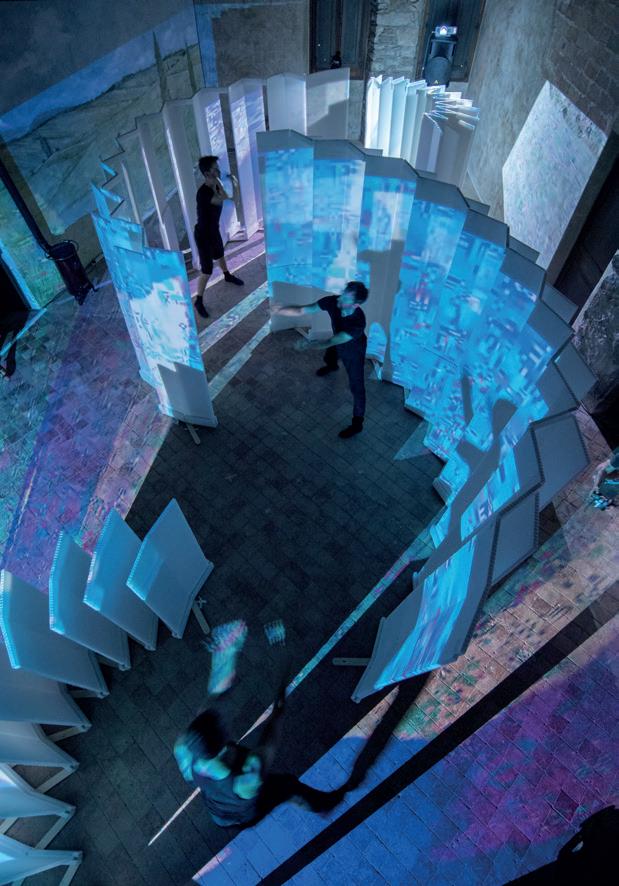





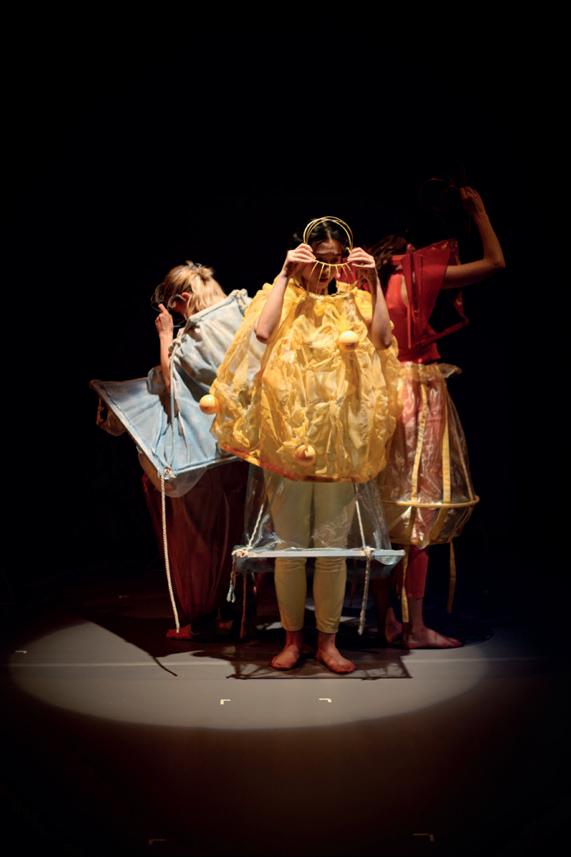


2.25
“Parding


Architectural education is constantly reformed by architectural associations and registration boards around the world with the aim to help architects prepare for the organisational, economic, and managerial realities of a world that keeps moving at a greater pace. The crisis in thinking about architectural education furthered the need of new, radical approaches and gave way to new pedagogies that foreground the production of space (Froud and Harris 2015). The drive to rethink design pedagogy by introducing more practice components and by adapting the curriculum to the new challenges of professional practice has triggered numerous curriculum changes in the past few years in the UK context. Educators acknowledged that the old-fashioned idea of the architect as a well-rounded jack-ofall-trades is to be reconsidered (Pringle and Porter 2015). Today, the pressing challenges of the new climatic regime, of wars and economic uncertainty prompt us to rethink anew the ontological and epistemic basis of design education and to actively remodel design pedagogy.
As an applied and skills-oriented discipline, architecture’s traditional orientation has always been that of a professional education. No matter where architecture is taught – at traditional universities, technical universities or universities of applied sciences – design studio remains at the centre of knowledge production and active knowledge exchange. It has a central role for shaping the fundamental characteristics of the discipline and its pedagogy. Design practice has evolved from apprenticeship through to the Beaux-arts and then the Bauhaus traditions (Crinson and Lubbock 1994), and this has resulted in different types of studio teaching (Salama 1995, Green and Bonollo 2003).
The pedagogy of design studio and juries has been studied extensively from different perspectives (Anthony 1991, Dutton 1987, Schön 1984, 1985, Stevens 1995, Webster 2005). The most exemplary study of studio-situated reflexivity of professional schools draws on a pragmatist mode of enquiry (Dewey 1933) and argues that reflection-in-action, stands against the systematic, scientific, linear way of knowing (Schön 1983). Schön’s theory of ‘reflective practice’ made a revolution in design anthropology founding a new epistemology of practice, by taking as its point of departure the competence and artistry already embedded in skilful practice (Schön 1987). Yet, Schön explicitly positioned the student’s prior knowledge as ‘invalid’ for the task at hand and thereby perpetuated an abuse of power that is unhelpful to the development of architecture as a profession (Willenbrock 1991). Following on these lines of criticism, Webster (2007, 2008) and Mewburn (2009) claimed that Schön promoted an inadequate idea of design learning as a mostly passive process of observation and replication in which the teacher’s main role is too ‘correct’ the student’s work, rather than help them to develop or hone their skills. This implied a narrow notion of how learning takes place through formal interactions only and failed to recognise the other dimensions of learning in addition to the cognitive – the affective and corporeal learning experiences and the student’s potential to be an active learner. The idea of the studio as solely occupied by students and teachers was also questioned.



The current trend towards practice-orientation makes us rethink some of the key foundations of studio teaching, the distinctive knowledge cultures involved in it and the strategies for better adaptation of designers’ education to the social and economic challenges of the day. Challenging further and adding to Schön’s anthropology of design education, here we aim at analysing the ‘performative’ dimension of studio pedagogy and at generating an alternative account of its distinctive ‘epistemic culture’ (Knorr-Cetina 1999). Drawing on Actor-Network-Theory (ANT) inspired observation of the practice of the AA Interprofessional Studio (AAIS) – a post-professional programme leading to either a MA or MFA in Spatial Performance and Design –directed by Theo Lorenz and Tanja Siems, we will analyse it as an exemplar to critically evaluate the current forms of architectural pedagogy in the UK context. Recent studies of architectural practices took inspiration from ANT and paid close attention to the material, epistemic and social dimensions of design practice (Houdart and Minato 2009, Loukissas 2012, Latour and Yaneva 2008, Yaneva 2009a and 2009b) and yet, design pedagogy has been rarely explored from this perspective.
We ask: ‘What is the specific role of design studio at the intersection of research innovation and multiple social, economic and cultural networks embedded in design?’ This will imply gaining better understanding of how the AAIS conducts design research and mobilises a large network of interlocutors from different disciplines. We will also reflect on the content and the skills taught at studio level, the partnerships, the spatial and material arrangements of the programmes, and the impact of various interprofessional networks on its design pedagogy. We will argue that the AAIS crafts a distinct epistemic culture whilst connecting a wide range of professionals and their social and economic networks in the relational orbits of a distinctive interprofessional knowledge production.


We will outline first the wider institutional context, relationships with other disciplines and spatial organisation of the AAIS. The spatial qualities and material arrangements of the programme (where it takes place – its studios and lecture rooms – and how it is affected by these spaces) affect the way students learn and interact. Moussavi’s analytic comparison of the Architectural Association (AA) and the Harvard Graduate School of Design (GSD) is very revealing in this regard (2012). The spatial arrangement and pedagogical strategy of design schools, she argues, influence the kind of character students take on in the future. In what follows we will analyse how the spatial topographies of teaching and learning in the AAIS help shaping distinctive design cultures and students’ profiles.



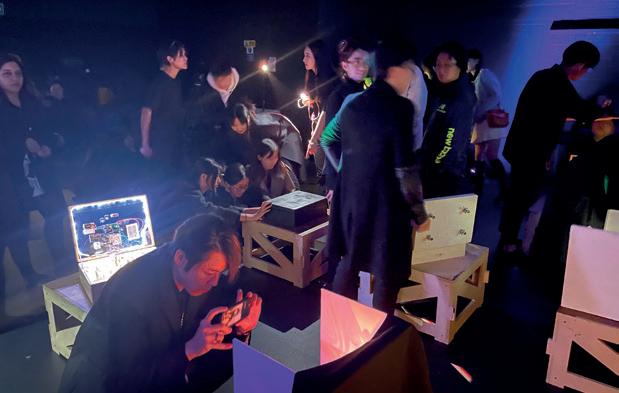


Final
The AAIS studio has always worked as a project office linked to a network of spaces and venues, and with this to various institutions and partners. The setting of the studio itself, however, has evolved over time. At the outset of the programme, as a course of ten students, the studio space was separated from the event spaces. The studio space served as a basic hub of design and collaboration, however for the applied parts of the studio additional spaces within the school were booked and transformed into short-term event spaces. In its current form of over thirty students the AAIS works from within a venue hub where smaller events and rehearsals can take place themselves. The applied nature of the studio differentiates the work from any usual pedagogic setting and the modus operandi is constantly changing between teaching and applying the work. Through the interdisciplinary work the studio model can neither follow a model of performance art, where the focus is on the rehearsal of performative work, nor that of a design studio with a setting focused on design around a table nor that of an artist studio, where the work would focus on the production of artefacts. The AAIS studio is a hybrid and constantly changing model between all these existing models. In this way the studio’s space is transforming from practice rooms and rehearsal spaces to design studio, production workshop, teaching space and public events. This transformative action within one or multiple spaces becomes one of the core exercises and skills developed by the students and its team, a constant change between fixed settings and flux.
How is the AAIS organised and how it works?
As a post-professional programme, the AAIS explores alternative forms of collaboration between the multiple creative professions through the research, conception, design and implementation/production of a series of genre-defying spatial performances and constructions. By creating unique project-events that form the basis for continued discussion, the AAIS provides students with a starting point for individual careers within a new overarching discipline. The programme provides through seminars, studio work, workshops and applied events a postgraduate programme that is based on interprofessional collaboration across the creative disciplines. The work of the studio demonstrates a field of work that stretches beyond the established professions and in this way creates projects within an ‘in-between’ discipline that is more than just the mere addition to the existing. To apply this work ethos, every year AAIS designs, curates and constructs events across the creative fields, such as dance, theatre and music performances, exhibitions, or festivals.
The programme is structured into two phases. The first phase concentrates on design studios and seminar-based teaching of the history and theory of interdisciplinary and interprofessional collaboration as well as network-based design, organisation and the realisation of applied events and installations resulting from the various collaborations. The second phase concentrates on the individual thesis of the students either in written form for the Master of Art students or through applied practice the in case of the Master of Fine Arts Students.
As an area of investigation, the field of performance offers itself as an ideal testing ground and laboratory for a wide field of design and architecture, as it bundles many of the main tasks within larger and smaller design projects and it clearly depended on a large level of layered collaborations. In a performance-based project the production must be delivered on time, to budget, with the given resources, managing a wide network of actants. The approach of the studio can be seen as a fast-forward imitation of the experience process, we go through in practice, a boot-camp for networking and creation. As such the studio seeks to start for each individual a process where the given frameworks of the studio gradually transform into multiplying networks for each participant. Initiatives and networks can easily overlap with different sets of aims and tasks whilst creating synergies within the overlap and divergences beyond. A simple example can be found within the different phases of the students in the studio and the studio itself. Whereas phase one focuses to discover the methodologies of the studio and to realise the first project, the second phase concentrates on building new networks, and a basis for one’s own career. The alumni, in parallel, starts to realise independent projects, applying the newly learned skills in the much harder environment of practice. Meanwhile, the studio itself and its protagonists develop the academic and professional agenda on the basis of all three phases. None of these entities can exist in isolation from the other, needing the synergy between them to thrive, yet each has its own set of aims and stipulations. This process unfolds within the duration of the course in three phases. In a first skilling phase a series of discipline or area of investigation related workshops take place, each manifesting in a public performance presentation. The collaboration takes place in a phase where the individuals in the teams still would have to discover their abilities and those of their peers. Yet, in the short time span of two weeks students develop and realise full projects based on the guidance and experience of the respective tutors. In rapid succession students learn in different settings how to organise themselves, how to negotiate ideas in relation to often new tasks and how to deliver these projects in a professional manner. In a second phase students develop two successive larger performance festivals in collaboration with their tutors. The acquired skills now need to be applied within an overall given brief and with the local and international network and partners of the studio. These projects require multiple levels of collaboration in design, organisation and execution. In a final educational step, each student forms in a third phase on the basis of the previous experiences their individual future mode of working and networks.
In the case of the Master of Arts, degree students use the previous events as applied case stories to further explore theoretical possibilities of working within networked creative disciplines. The Master of Fine Arts degree students move on to create their first, individually applied project in practice. For this they have to ensemble their own collaboration networks, develop the full spectrum of the envisioned work including their project brief, budget, venue, and dissemination of the project. In both cases it is the main aim that the thesis project creates a lasting effect for the individual’s professional future and initiates their networks through proven evidence.






Graham Harman
Theo Lorenz
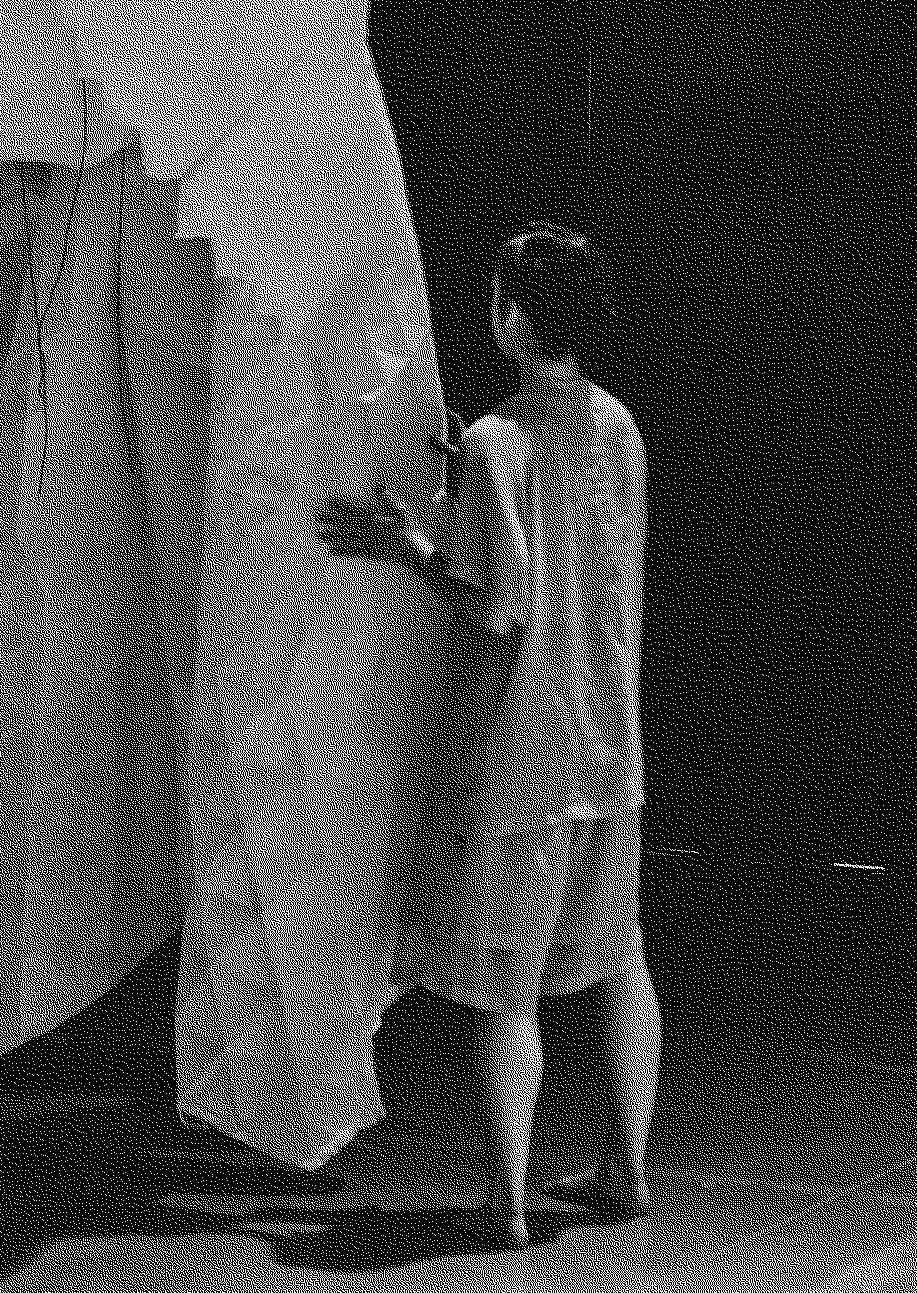
Objects are always performing. It does not matter if we designed them to fulfil a certain function, or if we look at them whilst they do so; they just perform. Engineers will first consider the performance of any object that is part of their range of concerns. Under what circumstances does the object perform: how, in relation to what, and within what set of goals? This performance occurs on multiple levels simultaneously. Movement, durability, time, expression and even dramaturgy are always present in any object. From the ‘swinging Berta’ bridge to a simple piece of gravel in the sun, we can both see and interpret all of these elements.
Yet in the context of the performing arts, the performance of the objects themselves might be under-represented at times, or even overlooked. If the objects in question are merely viewed as add-ons, or as decor with limited agency within a performance, the attention to their selection and design might be neglected in such a way as to lead to a result that is overall imbalanced. The agency that objects, props and sets hold within a spatial performance depend on their quality of design.





The quality of their performance, however, does not depend on their beholder and her taste, entertainment, or impression, but on the interplay of all the elements in the performance. An example of a performance that occurs without an audience is the “Moving Stone” project of the Interprofessional Studio in 2015. Set in the remote Gallery of Maniga Barche on Sardinia, the event itself was a serendipitous interplay of elements coming together at a single moment in time to form the overall performance. The Gallery is a roofless, semi-derelict building on the edge of the ocean in Calasetta and is always exposed to the elements. The student design consists of a set of 30 pendula in a grid, set out to react to the elements of wind and sun to form the basis of a narrative and choreography in which the performers react to the movement of the pendula. Under normal weather conditions this would have been, on its own, an interesting interplay of objects and subjects. However, the performance developed into a truly unique event in time at the moment when it took place. For as it happened, a set of natural phenomena intersected and took over. A rare total solar eclipse took place on March 20th, changing the entirety of the atmosphere on nothing less than a cosmic scale. Simultaneously, hurricane-force winds arose on Sardinia. The objects of the set thus became dramatic actants highlighting these unique natural occurrences. The performers, the dancer Joe Walkling and the singer David McAlmont, needed to subscribe to the directing of the pendula within an accentuated environment. Movement and song were submerged within the power of the objects. The moment in its entirety was neither un-graspable nor documentable and could only be understood through the overlap of all accounts of its parts.
The relation of object and performance can be described in a multitude of ways, according to various scales and dimensions. Yet these two terms must not be conceived as objects. It is customary to speak of art from the 1960s as somehow moving ‘beyond the object’ toward something with a more event-like character (Rose 1975). Yet for every effort to refer for instance to photography as an ‘objectless art’ there is the contrary observation that a photograph is the best means of converting an event into an object (Sayre 1983, Garcia 2016). In any case, whether we focus on spatial performance and design or on the performing arts instead, this ranges across a spectrum of objects ranging from site and venue to prop, set, costumes, words, lighting, and physical movement. Yet even an entire performance can be treated as an object. It might be asked: why this inflation of the word ‘object’, which is normally used to refer only to durable, mid-sized physical solids, or as a foil for its opposite word ‘subject’, that prince of modern philosophy? To speak of objects allows us to focus on at least two important points. First, it signifies that which has an autonomous or independent character that both resists and moulds our own wishes. In this respect, the object is filled with surprises and exceeds both all possible experience of it and the sum total of discoveries that can be made about it. In this way the object embodies what Jean Baudrillard calls ‘the revenge of the crystal’: it seduces the subject, whose purported freedom and transcendence are seldom its most relevant features (Baudrillard 1991, Baudrillard 2008). Second, to speak of something as an object implies a durable core of objecthood that persists through its numerous shifting costumes and facial expressions. In recent decades everyone has preferred to speak of ‘events’, as if transient encounters were the only thing of importance. If we now speak instead of objects, it is to emphasise the ability of things to change their appearance and mood through a vast range of possibilities without losing their identity, which is never fully expressed in any of its encounters. Yet it must also be remembered that far from excluding composition or relationality, the object actually requires them. Consider a simple example such as water, which acts as a unified thing, but upon closer inspection turns out to be a composite made of hydrogen and oxygen in fixed proportion. The fact that water is not as simple, irreducible, and indestructible as believed by the pre-Socratic thinker Thales of Miletus does not mean that water is not an object. This is worth mentioning due to an analogous case of greater importance in the sphere of aesthetics, which one of us has considered elsewhere in some detail (Harman 2020). Immanuel Kant is generally, and rightly, considered to have provided the basis for aesthetic formalism in his Critique of Judgment (Kant 1987). For Kant, an artwork should be regarded as cut off both from any conceptual paraphrase of it, and from any merely personal likes or dislikes one has toward its subject matter. The role of the beholders of an artwork is to view it with disinterest, subtracting themselves from it as much as possible, as if the object in question were the physical artwork free of human contamination aside from the minimal act of glancing at it. The prominent critic Michael Fried pursues this way of thinking when he asks us to follow Denis Diderot and oppose any ‘theatrical’ element in art (Fried 1988). Nonetheless, Fried later acknowledged that in the later course of French painting, the exact opposite occurred. Gustave Courbet painted himself into his own canvases, and Édouard Manet eventually launched modernism by means of pictorial figures who stare at us directly: leading to a ‘facingness’ in which beholder and artwork become deeply entangled with one another (Fried 1990, Fried 1996). To summarise, the Kantian sort of formalist purity is shown to be impossible. Instead of aesthetics being a matter of a non-human artwork opposed by a human beholder taking great pains not to get too involved, the topic of art turns out to be the composite made of the beholder and the (usually physical) work, just as hydrology is concerned with water as a whole rather than with hydrogen or oxygen in isolation from each other. Contra the early Fried, art is inherently theatrical; all art is performance art. This does not mean that visual art involving human movement or conceptual intervention is somehow privileged over still-life paintings, only that it cannot be excluded from the sphere of high art as high formalism wished.







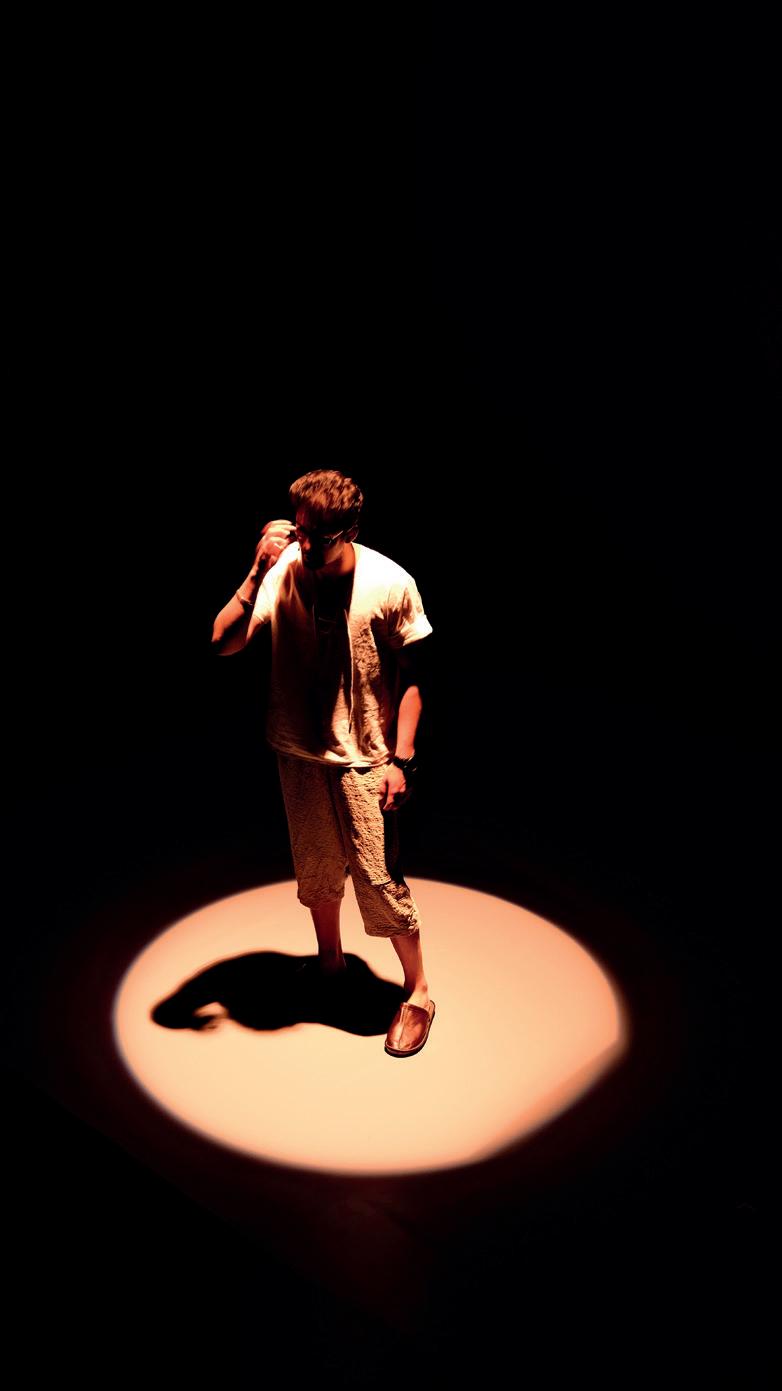




8.21/22
With this /people publication we are showing our gratitude to all our AAIS tutors* and external examiners
Richard Wentworth CBE, Prof. Kelly Chorpening, Prof. Barbara-Ann Campbell-Lange, Robert Taylor, who were sharing their endless knowledge with us.
A big thank you to all our AAIS students from the graduate diploma, the post-grad diploma and the MA and MFA degree-programmes, who created over the last years the following projects “Bauhaus Lab” (2009), “Seed to Scene” (2010), “Exquisite Corpse” (2011), “Angles of Incidence” (2012), “Flow Fields” (2013), “The Conversation” (2014), “Moving Stone” (2015), “UnREAL: XYZ” (2016), “Trust Truth Integrity” (2017), “A Walk” (2018), “Portrait of Humans” (2019), “Scream out loud! “(2020), “Origin: The story of Us” (2021), “Echo: Wherefore Art tough” (2022), “Moult: Three Graces” (2023), “Borne: The estranged gaze of compassion” (2024), “Love Has Never Been … “(2025). Special thanks to our AAIS alumni Yuyang Cheng, Zoya Currimbhoy, Raluca Grada, Dongsoo Koo, Lumia Liu, Tuo Lin, Elyssa Sykes-Smith and Zoie Jie Wang, who helped us over the last years. Thanks to Christian Küsters and Mihaela Mincheva at CHK Design in London for the art direction and design of this beautiful book, and for many years of interesting graphic design discussions and great collaborations ranging from the AAIS logo to the interactive webpage design.
An immense thank you to our Sponsors and Partners, who were collaborating with us and our AAIS network over the last years, especially to Christina Smith OBE and her Foundation for the remarkable space in Covent Garden and Ariadna Cantis and Pablo Berástegui for hosting us at the Matadero Madrid various times. Many thanks to Benedetta Tagliabue “The Fundació Enric Miralles” for including us in the ReSet Festival in Barcelona, to Will Alsop and his team for having us at their educational retreat “Las Heras”, in Girona, to Stefano Rabolli Pansera and his “Mangia Barche Gallery” on Sardinia and to Javier Peña Ibáñez, for accommodating us at the “Concéntrico” international architecture and design festival in Logroño. Special thanks to Hope Alkazar and Xtopia Istanbul and their team, especially Günsu Sari, Akalan Lalin, Melike Mucahit and to Melike Altinisik, Founder of MAA architects and MAALab, for establishing the connection to the venue. Special thanks to Ora Ito and his team for having us at the Marseille Modulor, MAMO Centre d’art de la Cité Radieuse, the contemporary art centre at Le Corbusier’s iconic Unité d’habitation building in Marseille and to Amr Assaad and Matt Yeoman the Shoreditch Arts Club founders and their team for having us at the SAC in London.
Thanks to the “Bauhaus Lab” team at the Theaterhaus in Jena, Markus Heinzelmann with Jan Brüggemeier, Janek Müller and Éva Kozma at the c3 Centre for Culture and Communication in Budapest, as well as Nick Crosbie the founder from Inflate and Steve Webb co-founder from Webb Yates Engineers for helping to build a stunning structure with us, and the AA Foundation team Miraj Ahmed and Saskia Lewis.
Thank you to Sabine Voggenreiter and her DQE-team at the “Design Quartier Ehrenfeld”, Andreas Schmitz and Judith Mayer from the “KunstSalon Stiftung” Foundation in Cologne, the Lisbon Trienal de Arquitectura team “Close, Closer” with Beatrice Galilee, José Esparza, Manuel Henriques and to Maciej Switała of the INAW Krakow international Biennial. During the pandemic lock down in Europe we had great help from Dongsoo Koo and his Gallery team in Seoul and the Yue Art Museum in Beijing to make our AAIS live performances happen, thank you. Thanks to the Roca Lisboa and Roca London Gallery, as well as the team of the Coin Street Community at the Oxo Tower Wharf and the LabTech team in Camden Market in London for their support. Thanks to the team of the Romantso, the creative hub and cultural centre in Athens and especially to João Lourenço, Vera San Payo de Lemos, Célia Caeiro and their team at the Teatro Aberto in Lisbon and to Mark Morris at the Victoria & Albert Museum in London.
Thank you to all photographers for their documentation of the AAIS events, especially Farah Aly (FA), Parastoo Anoushehpour (PA), Valerie Bennett (VB), Yue Fu (YF), Oliviu Lugojan-Ghenciu (OG), Takako Hasegawa (TH), Jason Kofinas (JK), Dongsoo Koo (DK), Theo Lorenz (TL), ArchLabyrinth studio Athens (AL), Hadar Menkes (HM), Alexandra Radounikli (AR), Tanja Siems (TS), Patarita Tassanarapan (PT), Zoie Jie Wang (ZW), Henrietta Williams (HW), Sue Jan Yeong (SY) and Tuitui Zhang (TZ) for their wonderful images we used in this publication.
AAIS tutors* Argyris Angeli, Jan Brüggemeier, Mona Camille, Nerma Cridge, Andrew Dean, Malgorzata Dzierzon, Jonathan Goddard, Heiko Kalmbach, David McAlmont, Kyriaki Nasioula, Pierre Nedd, Joel Newman, Gemma Nixon, Patricia Okenwa, Mauricio Pauly, Thomas Parkes, Yoav Ronel, Noa Segev, Hila Shemer, Patarita Tassanarapan, Tony Thatcher, Atimanyu Vashishth, Joe Walkling, Steve Webb and Renaud Wiser, cofounder of the AAIS programme Theo Lorenz and Tanja Siems.
PUBLISHED BY Actar Publishers
New York, Barcelona www.actar.com
AUTHORS
Theo Lorenz
Tanja Siems
EDITED BY
Theo Lorenz
Tanja Siems
GRAPHIC DESIGN
Christian Küsters
Mihaela Mincheva chkdesign.com
WITH CONTRIBUTIONS
BY / CO-AUTHORS
David Greene
Miraj Ahmed
Albena Yaneva
Robin Hunt
Portia Kamons
Graham Harman
Amr Assaad
COPY EDITING AND PROOF READING
T Lorenz, JJ Purtill
PRINTING AND BINDING
Gràfiques Jou, Barcelona
ALL RIGHTS RESERVED
© edition: Actar Publishers, editors
© texts: their authors
© design, drawings, illustrations, and photographs: their authors
This work is subject to copyright. All rights are reserved, on all or part of the material, specifically translation rights, reprinting, re-use of illustrations, recitation, broadcasting, reproduction on microfilm or other media, and storage in databases. For use of any kind, permission of the copyright owner must be obtained.
DISTRIBUTION
Actar D, Inc. New York, Barcelona
New York
440 Park Avenue South, 17th Floor New York, NY 10016, USA T +1 212 9662207 salesnewyork@actar-d.com
Barcelona Roca i Batlle 2 08023 Barcelona, Spain T +34 933 282 183 eurosales@actar-d.com
ISBN 978-1-63840-192-6
LIBRARY OF CONGRESS CONTROL NUMBER 2025937972
PUBLICATION DATE September 2025
COVER IMAGE ©Sue_Jan_Yeong
The publisher/author/editor has made every effort to contact and acknowledge copyrights of the owners. If there are instances where proper credit is not given, we suggest that the owners of such rights contact the publisher which will make necessary changes in subsequent editions.

THEO LORENZ
TANJA SIEMS
MIRAJ AHMED
AMR ASSAAD
DAVID GREENE
GRAHAM HARMAN
ROBIN HUNT
PORTIA KAMONS
ALBENA YANEVA

/people is a collaborative inquiry into the role of shared authorship, spatial agency, and performative action in contemporary design and education. Framed by the work of the Interprofessional Studio at the Architectural Association, the book brings together voices from architecture, performance, politics, and pedagogy to explore how methodologies rooted in practice, collectivity, and situated knowledge can shape new modes of creative engagement.
From protest and public encounter to speculative design and choreographed process, the book documents and reflects on experimental approaches developed within an evolving studio culture. These are not models, but working tools: invitations to act, think, and build with others.
/people contributes to a wider conversation on interprofessionalism, responsibility, and the creative disciplines as active forces for transformation: proposing ways to imagine, rehearse, and realise more inclusive futures.